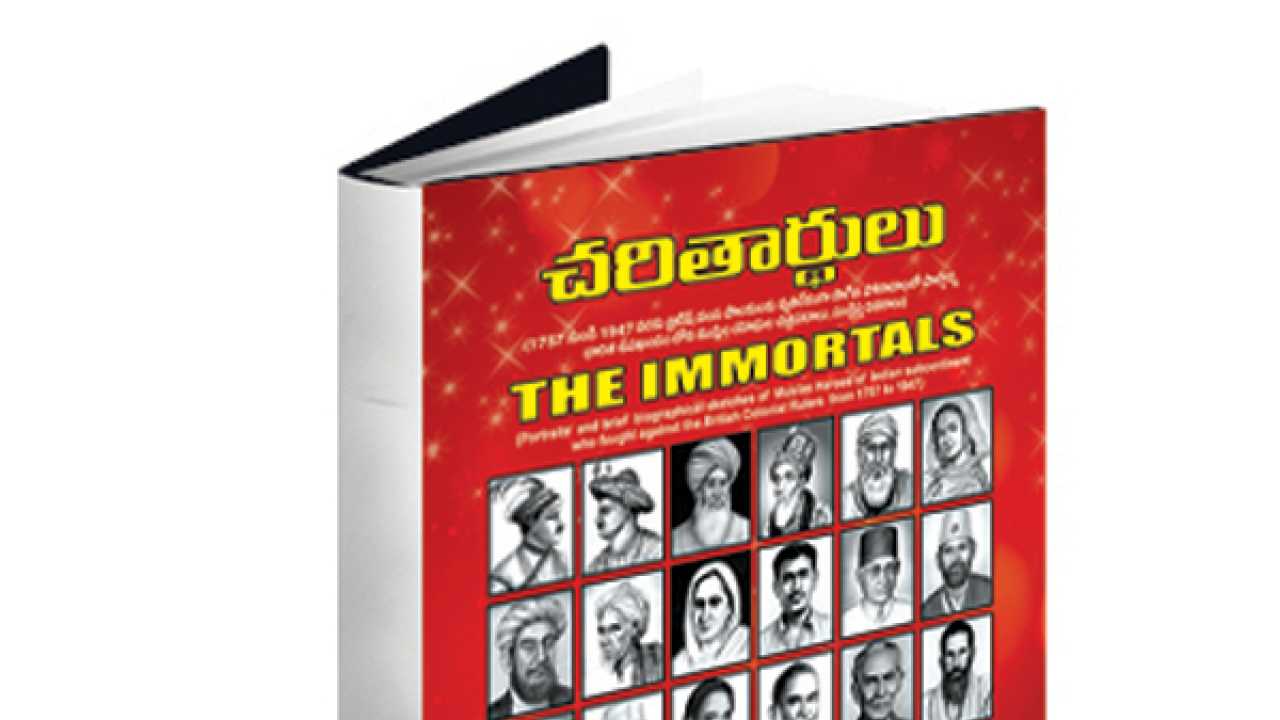
Book: The Immortals
Author: Naseer Ahamad
Publisher: Azad House of Publications
Pages: 352
Price: 1,000
Sixty-eight years since independence, and the narrative still remains confined to what we read in school about the heroism of a few brave men and (fewer) women who took on the British Raj. But however brave these leaders, they could never have succeeded had thousands across the country not answered their call. Sadly, few have cared to chronicle the sacrifices – often no less poignant than those of the leaders we know of and celebrate today. Syed Nasser Ahamad's The Immortals, which gives brief sketches of 155 such forgotten freedom fighters from the Muslim community, is thus a very important book despite its poor production, editorial and academic values.
Ahamad is no historian, but a journalist and a small businessman from Guntur in Andhra Pradesh who is interested in researching and highlighting the role of Muslims in the freedom struggle, often overlooked or dismissed by the majority, Hindu nationalist popular view. As Shamsul Islam, professor of history at Delhi University, writes eloquently in the preface, "There is a powerful Hindutva lobby at work, with tacit support from State, publicly declaring that the largest minority of India cannot be regarded as 'Hindustani' or 'Bharatiya'....publishing of material like this present work becomes an important and pertinent task in order to prove that Muslims have been equal partners of our common heritage of struggle and sacrifices."
Over the past 15 years, Ahamad has written 10 books on this subject, all in Telugu. The Immortals is the first time Ahamad has included an English translation alongside the Telugu text so as to attract a wider readership.
Large and heavy, the book has a simple format – the entire right hand-page is taken up by a black-and-white portrait, while on the left is the text – Telugu in the top half and English below. As a result, the text is brief, giving just the bare-bone details of family, education, career and campaign, political ideas, affiliations, especially on Pakistan. But despite the brevity and other limitations, The Immortals whets your appetite to know more about these fascinating characters from the sidelines of the main narrative of the freedom struggle whose bravery is now sadly, nearly forgotten.
Take the martyrs and bravehearts who fought in the 1857 war: Liaqat Ali, who captured Allahabad and declared himself representative of Bahadur Shah Zafar and Peer Ali, who organised the attack on an English army camp in Danapur and was hanged on July 7, 1857.
Among the other notable characters is Hafiz Muhammad Barkatullah Bhopali, who became vice-president of the Gadar Party in America, worked as a professor in Japan, started the Indian Council for Independence in Germany, was Prime Minister in the "government of India in exile" in Kabul, met Lenin, and addressed the Anti-Imperialist Conference in Belgium in 1927.
Azimullah Khan, who was sent by Nana Saheb Peshwa to England to fight his state's legal matters, also travelled widely to Malta, Crimea, Constantinople and France in the nationalist cause.
Others like Ashfaqullah Khan, who tried to save Ram Prasad Bismil by taking the entire responsibility for the Kakori train robbery, are better known.
There were some women too in this list, such as Abadi Bano Begum, who Gandhiji addressed as Ammijan, and Amatussalam, who undertook a fast against the communal violence in Noakhali, which she broke when Gandhiji himself offered her a glass of fruit juice.
Then there is 'Khilafatwale' Haji Usmain Sait, the scion of a wealthy merchant family in Bangalore, who was drawn to Mahatma Gandhi during the Khilafat movement and auctioned his own first born son, Ebrahim to raise money for the Congress. As the"cash bag of the Indian National Congress", writes Ahamad, Sait apparently signed blank cheques, gave away bags of gold coins, and sold his bungalows one by one. As for the "auction" of his son, Sait was fortunate that a close friend not only "bought" Ebrahim, but also gave him back to his father.
There's also the story of Abdul Qadir Bawazir, a rich merchant from Transvaal, who gave up everything to follow Gandhiji into Phoenix Settlement and later Sabarmati Ashram in India with his wife and two daughters.
Ahamad also digs out the obscure story of Bataq Mia Ansari in Chaamparan, who, in 1917, saved Gandhiji's life by informing him of the British Indigo planters' plan to poison him. His courage cost him his job and pushed him into penury. When Rajendra Prasad, who knew of Ansari's bravery first-hand, visited Motihari in 1950 as independent India's first president, he sanctioned 50 acres of land. Sadly, thanks to India's corrupt, inefficient bureaucracy, the land never reached Ansari, who died in 1957, or his descendants since.